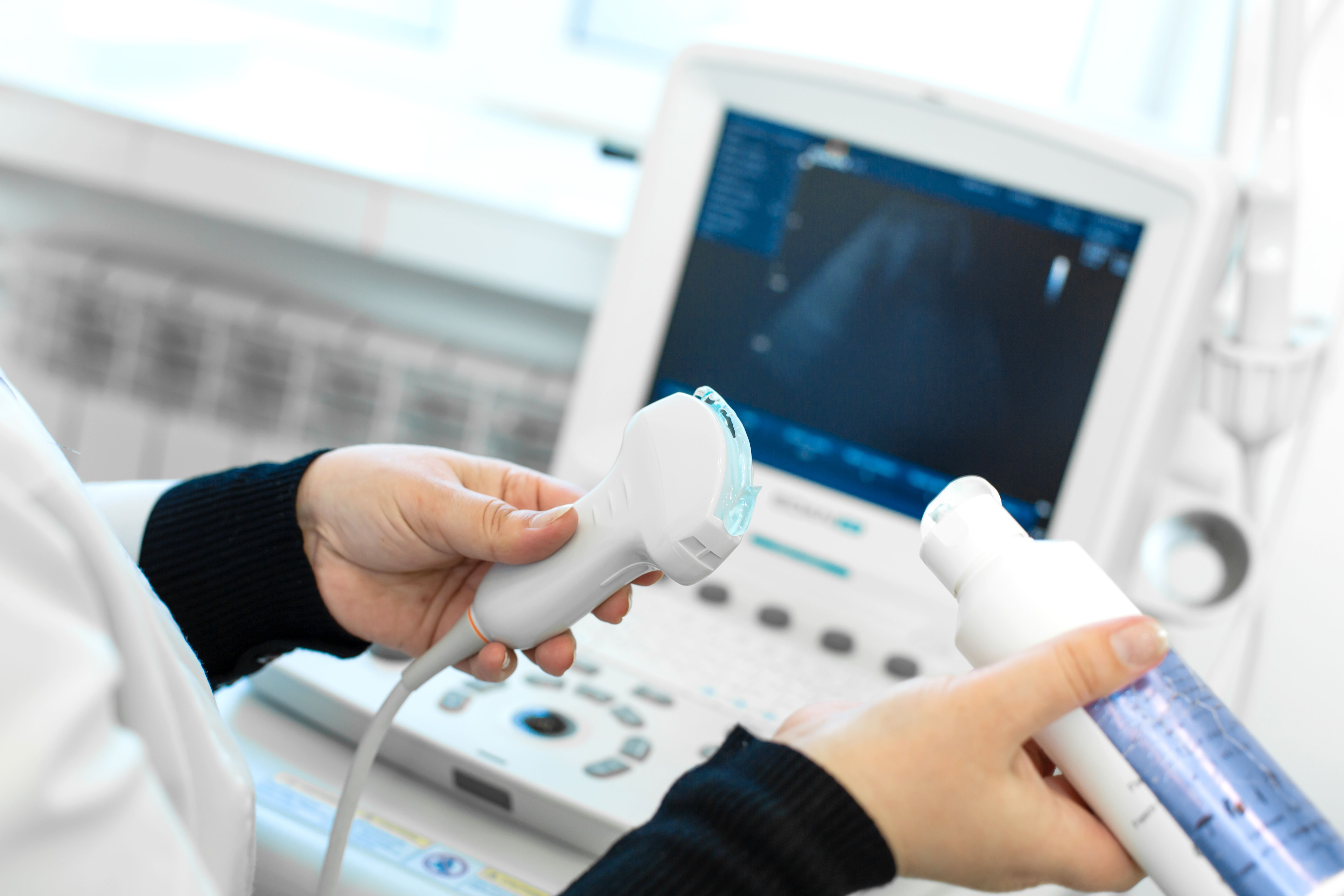Ultrasound for adnexal masses in pregnancy
In a recent article, the benefits in identifying and managing adnexal masses during pregnancy from ultrasound were discussed.
Ultrasound for adnexal masses in pregnancy | Image Credit: © Katy - © Katy - stock.adobe.com.

According to a recent article published in the American Journal of Obstetrics and Gynecology, ultrasound is a valuable tool for the workup of adnexal masses during pregnancy.
Adnexal masses during pregnancy have been estimated in 2 to 20 in 1000 pregnancies, with antenatal ultrasound associated with the increased frequency of adnexal masses in pregnancy. While most cases resolve without intervention, symptomatic patients or those at high risk of torsion or malignancy may require intervention.
To evaluate diagnosis, workup, and management methods of adnexal masses during pregnancy, investigators conducted a literature review. PubMed articles were found through searches using key words such as “adnexal mass,” “adnexal masses,” “ovarian mass,” “ovarian masses,” “pregnancy,” and “pregnant.”
Articles reviewed included original research articles focused on diagnosis, epidemiology, evaluation, and management of adnexal masses in pregnancy. Of identified adnexal masses in pregnancy, simple cysts measured under 5 cm made up about 75%. Spontaneous resolving was seen in 68% to 72% of masses at least 2.5 cm to 5 cm or with complex features.
Dermoid cysts were the most common type requiring surgical management or being removed during cesarean delivery at 32%, followed by serous and mucinous cystadenomas at 19%, endometriomas at 15%, and functional cysts at 12%. Bilateral adnexal masses were reported in 4% of cases and were all benign.
Hyperreactioluteinalis and luteomas were types of adnexal masses unique to pregnancy. Hyperreactioluteinalis, often appearing in the third trimester of pregnancy, presents as bilateral ovarian enlargement because of ovarian hyperstimulation by human chorionic gonadotropin. In most instances, it regresses rapidly after delivery.
Luteomas presents later in pregnancy as proliferations of luteinized cells, often appearing as bilateral tumors. They are often associated with hirsutism or virilization and regress suddenly after pregnancy.
About 2% of adnexal masses in pregnancy are malignant. In a population-based study using California hospital records, 87 cases of ovarian malignancy in pregnancy were found, of which epithelial tumors made up 51%, germ cell tumors made up 39%, and pseudomyxoma peritonei made up 9%.
Serious carcinomas were the most common epithelial tumors and dysgerminomas the most common germ tumors. Of ovarian cancers diagnosed during pregnancy, 64% to 81% were stage 1. When diagnosed during pregnancy, ovarian malignancy was more often of an earlier stage and lower grade and was associated with improved outcomes.
Ultrasound is often used for the initial identification of adnexal masses in pregnancy.It is highly accurate and safe, at a low cost. Pain is the most common symptom reported in patients. Adnexal masses in pregnancy display similar ultrasonographic features to those outside of pregnancy.
Teratomas presented with complex echo patterns with hyperechoic areas and distal shadowing, while endometriomas presented as complex unilocular or multilocular cysts with low-level internal echoes. Simple cysts presented with a smooth thin wall, cystadenomas with thin septations, and hyperreactio luteinalis with thin-walled cysts.
Luteomas present as irregular solid masses and leiomyomas as round with potential cystic spaces during degeneration. Thick or irregular septations, mural nodules, solid or papillary components, and a diameter over 5 cm as ultrasonographic features indicate malignancy.
While tumor markers are less reliable in pregnant patients than nonpregnant patients, they may still be referenced when malignancy is suspected or identified. In normal pregnancy, the tumor marker CA-125 may be elevated.Conditions associated with pregnancy may also cause derangements in tumor markers.
Adnexal masses during pregnancy are associated with risks such as torsion, labor obstruction, and malignancy. Of cases with cysts over 3 cm, 3% have been associated with obstruction of labor, and 2% to 10% have been associated with hospital admission for pain. In large case series, torsion rates range from 3% to 12%.
Overall, there are various characteristics of adnexal masses in pregnancy which can be identified through ultrasound. Investigators recommended careful pre-operative planning and treatment for improved outcomes in pregnant patients.
Reference
Cathcart AM, Nezhat FR, Emerson J, Pejovic T, Nezhat CH, Nezhat CR.Adnexal masses during pregnancy: diagnosis, treatment, and prognosis. American Journal of Obstetrics and Gynecology. 2023;228(6):601-612.doi:10.1016/j.ajog.2022.11.1291
S1E4: Dr. Kristina Adams-Waldorf: Pandemics, pathogens and perseverance
July 16th 2020This episode of Pap Talk by Contemporary OB/GYN features an interview with Dr. Kristina Adams-Waldorf, Professor in the Department of Obstetrics and Gynecology and Adjunct Professor in Global Health at the University of Washington (UW) School of Medicine in Seattle.
Listen
Study shows a healthy prenatal diet could be upstream obesity prevention strategy
December 26th 2024"Our findings support the recommendation of a healthy diet based on the current guidelines (as measured by the HEI) during pregnancy, since it may reduce patterns of infant growth outside reference ranges."
Read More
Early pregnancy cannabis use high in states with recreational legalization
November 11th 2024A population-based time-series analysis California before, during and after legalization show a rising trend in women using cannabis while pregnancy especially when the state has legalized the drug.
Read More
